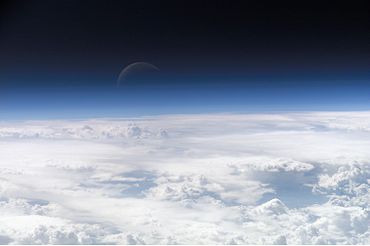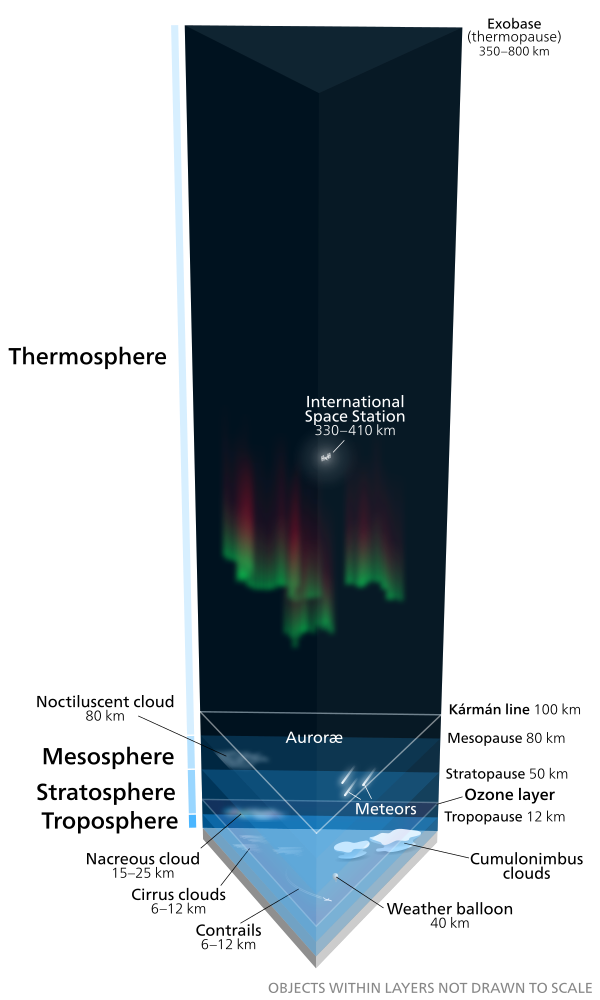You might not think that there is a defined boundary between the Earth and outer space but there is.

But then again, you wouldn’t be wrong in thinking it is less a hard line like a border and more like a fluctuating definition of where and when Earth’s atmosphere ends and space begins.

This boundary between space and Earth serves as a legal mechanism for defining when a spacecraft is in Earth’s atmosphere – and possibly the airspace of a sovereign state – or in space where the laws are different and sovereign airspace does not apply.
Established by the Fédération aéronautique internationale(FAI) a world standard setter and records organization for aeronautics and aerospace activities and known in English as the World Air Sports Federation.
Karman Line defined by the FAI
For the FAI the Karman line is about 330k feet above the Earth’s mean sea level or 100 km or 62 miles, depending on your system of measurement.
Is there a Universal definition of the Karman Line?
As you can probably see from the composition of the definition – particularly the mean sea level of the Earth – the Karman line’s calculation is somewhat complex but is meant to take into consideration the general range of features on Earth’s surface.
But it is not a universal definition, which should come as no surprise.
Other organizations have their own definitions of the boundary between space and the Earth’s atmosphere. For example, NASA lowers the line by some 12 miles to 50 miles above sea level.
There are a myriad of reasons behind that but one commonly accepted explanation is that this is the agency’s definition for when one of its personnel has made it into space and thus merits the distinctions gifted by the organization’s outer space badges.
There is no international law for the definition of the boundary of space hence why it is both a real thing and a conceptual thing at the same time.
Why is there no international standard on this front?
Basically, the issue is that there is the feeling by some nation states that an international boundary between the Earth’s atmosphere will limit airspace rights above that country which no nation is eager to give up.
One nation, in particular, the United States wields huge influence over most of the rules making bodies in this area and is pretty ambivalent about a hard definition because it would remove the largely lawless system we have now.
One major concern in this area is that spacefaring technologies and opportunities have not been fully explored; therefore, agreeing to something now might unnecessarily limit the development of these areas later.
Nonethe less the organizations that measure and archive human achievemnt in the areas of air and space, like the World Air Sports Federation, then the Karman line is essential.
Named after Hungarian engineer and physicist Theodore von Karman, In the last chapter of his autobiography Kármán address the issue of edge of outer space.

Theodore von Karman
” Where space begins… can actually be determined by the speed of the space vehicle and its altitude above the earth.
Consider, for instance, the record flight of Captain Iven Carl Kincheloe Jr. in an X-2 rocket plane. Kincheloe flew 2000 miles per hour (3,200 km/h) at 126,000 feet (38,500 m), or 24 miles up.
At this altitude and speed, aerodynamic lift still carries 98 per cent of the weight of the plane, and only two per cent is carried by centrifugal force, or Kepler Force, as space scientists call it.
But at 300,000 feet (91,440 m) or 57 miles up, this relationship is reversed because there is no longer any air to contribute lift: only centrifugal force prevails.
This is certainly a physical boundary, where aerodynamics stops and astronautics begins, and so I thought why should it not also be a jurisdictional boundary?
Haley has kindly called it the Kármán Jurisdictional Line. Below this line space belongs to each country. Above this level there would be free space “.
The Karman line is likely to serve as the definitional boundary between the Earth’s atmosphere and space for quite some time to come or at least until an internationally binding law can be developed.
Reference
The edge of space: Revisiting the Karman Line 1970, Viewed 14 July 2019, <https://www.sciencedirect.com/science/article/pii/S0094576518308221>.
What altitude is considered the Edge of Space? | MiGFlug.com Blog 1970, Viewed 14 July 2019, <https://migflug.com/jetflights/what-altitude-is-the-edge-of-space/>.
What is the Kármán line, and where is the edge of space? 1970, Viewed 14 July 2019, <https://www.nationalgeographic.com/science/2018/12/where-is-the-edge-of-space-and-what-is-the-karman-line/>.
Where is space? | NOAA National Environmental Satellite, Data, and … 1970, Viewed 14 July 2019, <https://www.nesdis.noaa.gov/content/where-space>.
Why defining the boundary of space may be crucial for the future of … 1970, Viewed 14 July 2019,
https://en.m.wikipedia.org/wiki/K%C3%A1rm%C3%A1n_line#cite_note-6
https://en.wikipedia.org/wiki/K%C3%A1rm%C3%A1n_line
Source: https://www.jupiterfuture.com/blogs/space-1/karman-line-where-does-earth-end-and-space-begin
source https://jupiterfuturespaceshop.wordpress.com/2019/07/13/karman-line-where-does-earth-end-and-space-begin/

No comments:
Post a Comment